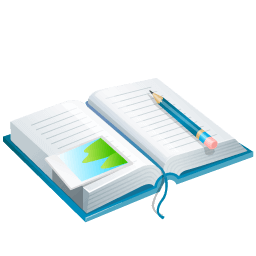In any complex project, ensuring that all requirements are met is a monumental task. A Requirement Traceability Matrix (RTM) is a simple yet powerful tool that provides a method for tracking requirements from their origin to their implementation and verification. This guide will walk you through everything you need to know about creating and maintaining an effective RTM.
For a foundational understanding of the Business Analysis domain, you can learn more about Business Analysis here.
Quick Links to Topic:
- Importance of Requirement Traceability
- Understanding RTMs
- Types of RTMs
- Benefits of Using RTMs in Business Analysis
- Key Components of an Effective RTM
- Creating Effective Requirement Documentation
- Best Practices for Creating RTM Documentation
- Step-by-Step Guide to Creating RTMs
- Tips for Ensuring Accuracy and Completeness of RTMs
- Real-Life Example: E-commerce Website Development
- Tools and Resources for Creating RTMs
- Best practices for maintaining and using RTMs
- Common challenges in using RTMs and how to overcome them
What is a Requirement Traceability Matrix (RTM)?
A Requirement Traceability Matrix is a document, typically a table, that links user requirements to their corresponding test cases, design specifications, and other project artifacts. It provides a clear and concise way to ensure that no requirement is overlooked during the development and testing lifecycle.
Why is an RTM Crucial for Project Success?
- 100% Test Coverage: An RTM ensures that every requirement is linked to a test case, guaranteeing complete test coverage.
- Impact Analysis: It makes it easy to assess the impact of a proposed change. If a requirement changes, the RTM shows you exactly which design elements and test cases will be affected.
- Prevents Scope Creep: By tracing all work back to a specific requirement, an RTM helps prevent unapproved features from being added to the project.
- Improved Communication: It provides a single source of truth for all stakeholders, improving communication and reducing misunderstandings.
The Core Components of an RTM
An effective RTM typically includes:
- Requirement ID: A unique identifier for each requirement.
- Requirement Description: A brief explanation of the requirement.
- Source: Where the requirement came from (e.g., Business Requirements Document, stakeholder interview).
- Design Specification ID: The ID of the design document that addresses the requirement.
- Test Case ID: The ID of the test case that verifies the requirement.
- Test Result: The status of the test case (e.g., Pass, Fail).
Types of Traceability
There are three primary types of traceability that an RTM can provide:
- Forward Traceability: Maps requirements to test cases. This ensures that you are building the product right.
- Backward Traceability: Maps test cases back to requirements. This ensures that you are building the right product.
- Bidirectional Traceability: A combination of forward and backward traceability, which provides a complete view of the requirement’s lifecycle.
How to Create an RTM: A Step-by-Step Guide
- Gather Your Documents: Collect all your requirements documentation (e.g., BRD, functional specifications) and your test case documentation.
- Create the Matrix: Set up a spreadsheet (like Excel or Google Sheets) or use a requirements management tool (like Jira).
- List All Requirements: Create a row for each individual requirement, giving each a unique ID.
- Map to Design and Test Cases: For each requirement, add the corresponding design specification IDs and test case IDs.
- Maintain and Update: The RTM is a living document. It must be updated continuously throughout the project lifecycle.
RTM Template and Example
Here is a simple RTM template for an e-commerce website:
| Req ID | Requirement Description | Source | Design ID | Test Case ID | Test Status |
|---|---|---|---|---|---|
| UR-01 | User should be able to register for a new account. | BRD 1.1 | DS-01 | TC-01 | Pass |
| LI-02 | User should be able to log in with email and password. | BRD 1.2 | DS-02 | TC-02 | Pass |
| SP-03 | User should be able to search for products. | BRD 2.1 | DS-03 | TC-03 | Fail |
Best Practices for Maintaining Your RTM
- Keep it Updated: The RTM should be updated in real-time as changes occur.
- Assign Ownership: Designate a specific person (usually the business analyst or project manager) to be responsible for maintaining the RTM.
- Use Clear and Concise Language: Ensure that all descriptions are easy to understand.
- Automate Where Possible: Use tools like Jira or other requirements management software to automate the creation and maintenance of your RTM.
By mastering the Requirement Traceability Matrix, you can bring a new level of control, clarity, and quality to your projects, ensuring that you deliver a product that truly meets the needs of your stakeholders.
Enjoy !!! See Yaaa, Next.


